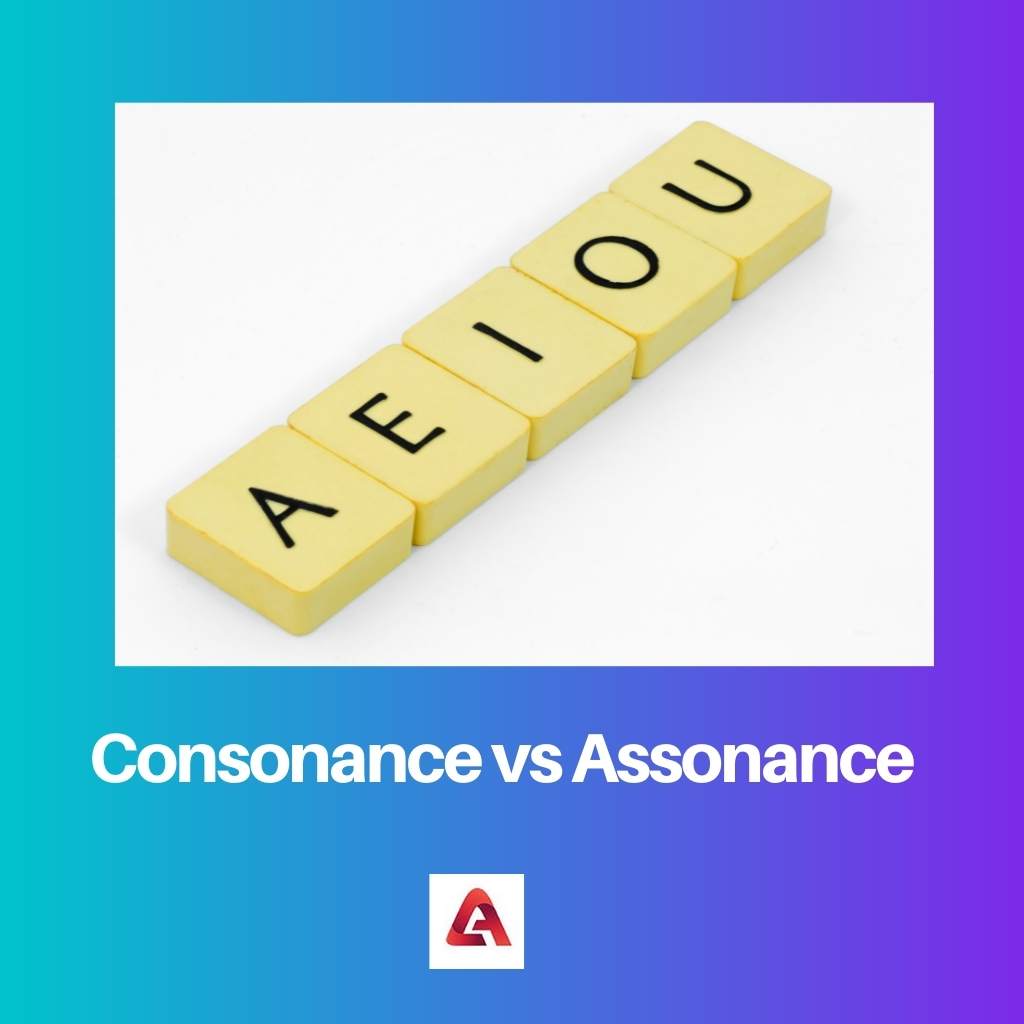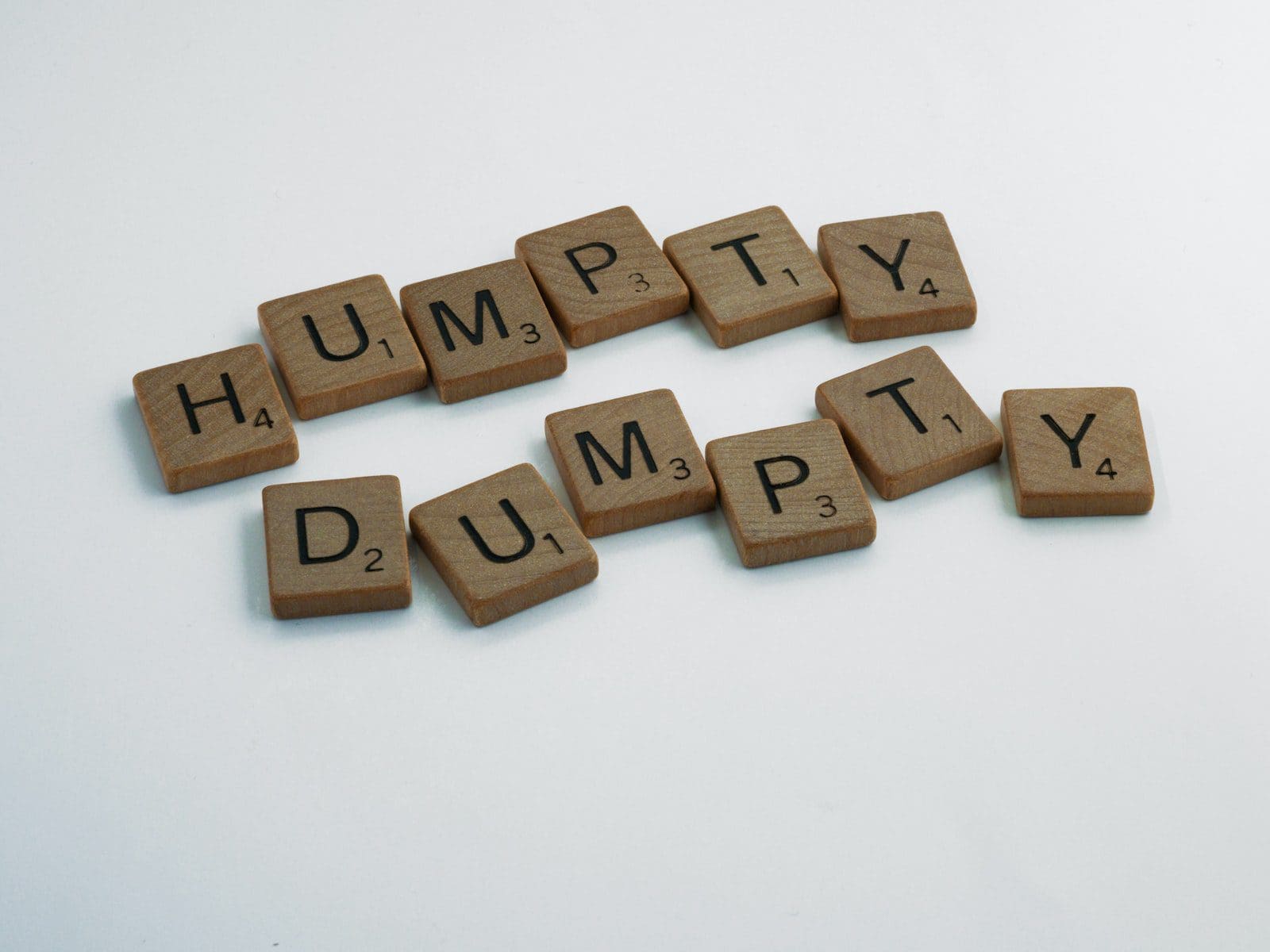The English language has several conditions to learn. An individual Mother Tongue consists of different phrases and kinds to use. English had several clauses and types to acquire.
Poetries, Stories, Songs, Scripts and many others should follow the clauses and conditions in English. Consonance and Assonance are repetitions instructing an individual while framing the sentences.
Key Takeaways
- Consonance refers to the repetition of consonant sounds within words or at the end of words.
- Assonance, on the other hand, refers to the repetition of vowel sounds within words.
- Consonance is used to create a musical or rhythmic effect, while assonance is used to create a subtle rhyming effect.
Consonance vs Assonance
Consonance involves the repetition of consonant sounds within or at the end of words, while assonance is the repetition of vowel sounds within words. Both techniques contribute to a rhythmic and engaging literary work.

The word, Consonance refers to the consonants in English words. Consonance is a device that identifies the repetition of consonants in a sentence. An individual can find the consonants in between the words in a sentence.
Similar consonants find where the neighbouring words are vowels that sound different. Consonance is also known as compatibility between actions. Consonance is contemplated as the counterpart of the vowel-sound repetitions in a sentence.
In Latin, the word Consonant means ‘Sounding Together’. In poetry, Consonances had used as the resemblance in sound between two expressions.
Assonance is opposite to Consonance, where Assonance represents the repetition of Vowels in the sentences. Assonance represents the sound of the syllables between their vowels or their consonants.
The ending of the neighbour word pronounces equal to the other words in a sentence. The Consonance between vowels is called Assonance.
Assonance arises the terms precisely from the rhyming of two or more stressed vowels where consonants had not been considered in a sentence and compatibility of sound in the terms.
Comparison Table
| Parameters of Comparison | Consonance | Assonance |
|---|---|---|
| Meaning | Consonance is a literary device that identifies the repetition of consonants in a word. | Assonance represents the repetition of vowels in a sentence. |
| Difference | Consonance represents the consonants. | Assonance represents the vowels. |
| Repetition | Consonance repeats the consonants anywhere in a word. | Assonance repeats the vowels anywhere in the word. |
| Uses | Consonance had used as the end of the words where the sound of the words is similar. The Consonances play a vital role in the creation of half-rhyme. | Assonance had used in literature, poetry, prose. Assonance used to set the mood by the sounds. |
| Examples | Mike likes his new bike. Toss the glass boss are the examples where we can find the sounds of repetition consonants. | Go slow over the road. Shally sells the seashells beside the seashore are examples where we can compare the vowel sounds. |
What is Consonance?
Consonance had referred to as a literary device that identifies the repetition of the consonants in the terms. Consonances had used as the end of the word. The sound is similar to the Neighbour consonants in a term.
Similar consonants can find where the neighbouring words are vowels that sound different. Consonance is also known as compatibility between actions.
An individual can identify the pronunciation of the words similar to the Neighbour words. Consonance only represents the sound of consonants and does not take part in the vowels. In poetry, Consonances had used as the resemblance in sound between two words.
In Latin, the word Consonant means ‘Sounding Together’. Consonance had identified in the early 16th century. Consonance takes half the creation in rhymes and plays a vital role in rhyme. Consonance repeats the consonants anywhere in a word. Examples of Consonance are,
- Mike likes his new bike
- Toss the glass, boss
- He struck a streak of bad luck
- I will crawl away from the ball
In the above examples, we can identify the consonant sounds. The repetition of the consonants had taken place and is considered as the rhyming words. Consonances had used at the end of the term that sounded similar to the Neighbour words.

What is Assonance?
Assonance represents the resemblance to the sound of the syllables between the vowels. Assonance is a stylish literary device that identifies the repetition of vowels.
The ending of the neighbour word pronounces equal to the other words in a sentence. The Consonance between vowels is called Assonance. Assonance repeats the vowels anywhere in the terms. An individual can find the sound of the vowels in Words and does not find the consonants.
In poems, the vowels are repeated widely without consonants, known as Assonances poems. Sometimes Assonance in a poem is also called vowel rhymes.
In the early 12th century, La Chanson de Roland had introduced the Assonances in poems. The ending lines of the poem are impure and rhyming.
Assonance uses literature, poetry, and prose, where an individual can identify vowel sounds. Assonance had used to set the mood with the repetition of sounds of vowels. Examples of the Assonance are,
- Go slow over the road
- Patience always pays
- I made my way to the lake.
In the above examples, we can find the vowel repetition sounds clear. Assonances are used to create rhythm in poetry. Assonance sets the mood of an individual.

Main Differences Between Consonance and Assonance
- Consonance had referred to as a literary device that identifies the repetition of consonants in words. Assonance has referred to as a literary device that identifies the repetition of vowels in terms.
- Consonance plays a vital role in the formation of half-rhyme, whereas Assonances are the function to create rhythm in poetry.
- Consonance had introduced in the early 16th century. In Contrast, Assonance had identified by the La Chanson de Roland in the 12th century.
- Consonance had used as the end of the words that sound similar to the neighbour. But Assonances had used literature, poetry, and prose used to set the mood.
- I will crawl away the Ball is an example of Consonance, whereas Patience Always Pays is an example of Assonances.

The article is quite enlightening and brings out the importance of understanding English literature in a different perspective. Being aware of Consonance and Assonance can not only enhance our reading experience but also aid in improving our writing skills.
Absolutely. It’s the small details like Consonance and Assonance that shape the beauty of literature in English.
Couldn’t agree more. I find it fascinating how understanding the intricacies of the English language can open up a whole new dimension of reading and writing.
The article engrossingly navigates the nuances of Consonance and Assonance, providing an insightful exposition on their distinctive roles in English literature. The practical examples accentuate the application of these literary devices.
Absolutely. The practical examples powerfully exemplify the significance of Consonance and Assonance, shaping a deeper understanding of their interpretative implications within literary works.
Well stated. The practical applicability of Consonance and Assonance highlights the profound influence of these literary devices, enhancing our analysis of literary compositions and their underlying techniques.
The detailed exploration of Consonance and Assonance in this article is commendable. It elucidates their relevance in literary compositions, fostering a deeper appreciation for the nuances of English literature.
Indeed. The article’s in-depth analysis elevates the understanding of Consonance and Assonance, enriching our literary discernment by uncovering the intricacies of these literary techniques.
The article provides an insightful perspective on the diverse literary techniques within English literature, particularly emphasizing Consonance and Assonance. The comprehensive elucidation broadens our understanding of these aspects in literary expressions.
The article presents a compelling narrative of Consonance and Assonance, offering a comprehensive overview of their principles and distinct attributes. The practical examples effectively reinforce the conceptual understanding.
Absolutely. The integration of practical examples bolsters the conceptual framework, enabling readers to grasp the essence of Consonance and Assonance within literary works more effectively.
The article delves into the details of Consonance and Assonance, shedding light on their significance in English literature. It provides a comprehensive understanding of these literary devices.
Well said. The in-depth analysis of Consonance and Assonance equips readers with a more profound insight into the nuances of English literature.
The article effectively highlights the key takeaways from understanding the use of Consonance and Assonance in English. The comparison table is particularly helpful in clearly outlining the differences between the two concepts.
Agreed. The comparison table simplifies the understanding of Consonance and Assonance, making it easier to comprehend the unique literary techniques.
The explanation of Consonance and Assonance effectively distinguishes between these literary devices. The article’s examples further reinforce the practical application of Consonance and Assonance.
Exactly. The examples provided offer clarity on how Consonance and Assonance manifest in real literary works, making it easier to comprehend their role in enhancing the poetic and prose forms.
The article’s focus on examples to illustrate Consonance and Assonance is commendable. It elucidates the practical implications of these literary tools, making them more accessible to readers.
The article adeptly elucidates the distinction between Consonance and Assonance, providing meaningful insights into the impact of these literary devices on poems, stories, and other written forms. The historical context of Consonance is particularly intriguing.
Well articulated. The historical background adds a fascinating layer to our understanding of Consonance, shedding light on how its role has evolved within literary works over time.
Indeed. The inclusion of historical context enriches our comprehension of Consonance and Assonance, offering a holistic view of their significance in literature.
The detailed comparison table effectively contrasts Consonance and Assonance, providing a nuanced perspective on their function within English literature. It enhances the reader’s analytical skills concerning literary techniques.
Absolutely. The comprehensive comparison table aids in discerning the subtle differences between Consonance and Assonance, enriching our interpretation of literary compositions.
Agreed. The in-depth comparison catalyzes a deeper understanding of these literary devices, enriching the reading experience by enabling readers to identify the specific application of Consonance and Assonance.